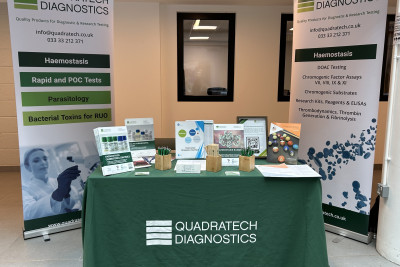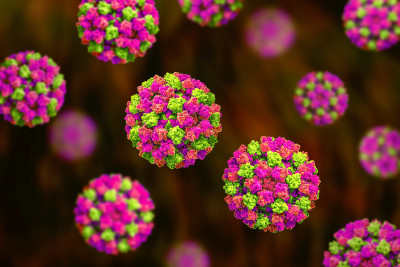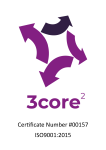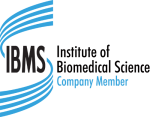News
All the latest news from Quadratech Diagnostics. If you would like to receive updates via our newsletter then please sign up here.
Showing Category: Blog Posts
Harnessing bacteria’s potential: Cholera Toxin Products
Harnessing bacteria’s potential: Cholera Toxin Products Cholera toxin is produced by Vibrio cholerae, a gram-negative bacterium, and is the main virulence factor in the development of cholera, a waterborne acute diarrheal disease. As a classic AB Type toxin, cholera toxin consists of a single A subunit surrounded by five identical B subunits, arranged as pentamer […]
UK NEQAS for Laboratory and Clinical Haemostasis 2025 Reflections
UK NEQAS for Laboratory and Clinical Haemostasis 2025: Key Takeaways and Reflections by Quadratech Diagnostics Team In June, we were delighted to sponsor UK NEQAS Blood Coagulation Annual Scientific Meeting in Sheffield. We truly valued the opportunity to meet with our existing customers and to welcome new participants interested in our diagnostic solutions. The two-day […]
Virus-like particles for vaccine R&D and diagnostic assays
Virus-like particles (VLPs) are self-assembled protein nanoparticles that closely resemble viruses, but contain no viral genetic material and are replication-deficient. First discovered in 1968 in sera of patients infected with Hepatitis B virus, VLPs have since become vital tools for scientific and translational research in biology and medicine. The utility of VLP technology has expanded […]
Chromogenic Substrates in Haemostasis
Chromogenic substrates are small synthetic peptides which mimic the natural substrate of the enzyme and have a detector chromophore, typically para-nitroaniline (pNA), attached to the cleavage site. Enzymatic cleavage releases pNA and results in a colour change, which can be followed spectrophotometrically and is proportional to the activity of the enzyme. The concept of chromogenic […]
Pathogen Diagnostics Tips & Tricks
OPTIMAL ASSAY SELECTION FOR DIAGNOSTIC PARASITOLOGY & MYCOLOGY Conventional diagnostic methods (e.g., faecal egg count, blood smear examinations) rely on the presence of parasite, eggs, fungus, or spores in the patient sample and are often time consuming, subjective, and demand high expertise. Serology methods are gradually becoming a new standard for clinical diagnostics. They harness […]







